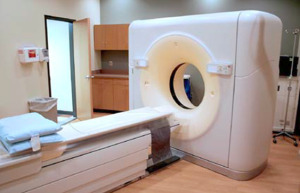Lung Cancer Surgery
Depending on the location, size, and stage of the tumors, surgery to remove lung cancer is one of the many state of the art treatment options available at the Cancer Center of Southern California. In many cases, surgery is used as part of a comprehensive, multi-modal cancer treatment plan that also includes chemotherapy and radiation. Like surgical procedures for a multitude of medical conditions and illnesses, medical technologically has significantly evolved in recent years, making modern cancer surgery less invasive and more precise than ever before.

Lung Cancer Surgery
Board-certified oncologist Dr. Sant P. Chawla and his team at the Cancer Center of Southern California specialize in a multi-disciplinary approach to lung cancer treatment. He will often consider multiple approaches, including lung cancer treatment. The purpose of surgery is to remove cancer cells, with the aim to remove as much of the cancerous lung tissue as possible, as well as a small amount of peripheral tissue depending on the type of tumor, in order to help minimize the likelihood of a recurrence of lung cancer.
What is Robotic Lung Cancer Surgery?
Robot assisted surgery is the next generation of medical technology. As with most minimally invasive medical procedures, robotic surgery holds several benefits over traditional “open” surgery, including:
- Greater precision, accuracy, flexibility, and surgical control
- Lower margin of error and surgeon fatigue related complications
- Less blood loss
- Reduced/minimal scarring
- Faster healing and recovery period
- Shorter hospital stays
- Fewer complications
Endoscopic surgery is another minimally invasive option that uses modern diagnostic and imaging technology to help surgeons visualize the tissue and surgical area through 3D images projected onto a screen in the operating room from the images taken with the endoscope, the surgical instrument equipped with a small camera at the end.
Endoscopy requires a smaller incision and allows for less bleeding and less general complications while offering greater potential for accuracy and enhanced diagnostics during the actual procedure.
Whether or not an oncologist determines surgery to be a viable option depends on the location, size, and stage of the cancer, among other factors. With comprehensive treatment plans, surgery often follows chemotherapy, with the goal of shrinking the tumors first in order to make them easier to remove in a less invasive way, and to improve the likelihood of successful removal of all malignant tissue in the lungs.
There are three main types of surgery to remove lung cancer:
Sublobar – The lungs contain a total of five lobes (three in the right, two in the left). In this procedure small tumors and cancer tissue are removed from a lobe.
Lobectomy – An entire lobe is removed, most commonly in cases of small cell lung cancer, and cases where the tumors are relatively contained and have not spread to lymph nodes or other parts of the body in otherwise healthy patients.
Pneumonectomy – In rarer cases, the entire lung will be removed when less invasive options are not sufficient to remove the tumors in patients with otherwise healthy lung function.
Next, read about Lung Cancer


